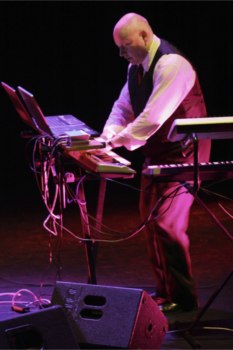Creator of melodic and highly spherical ambient music:
|
||
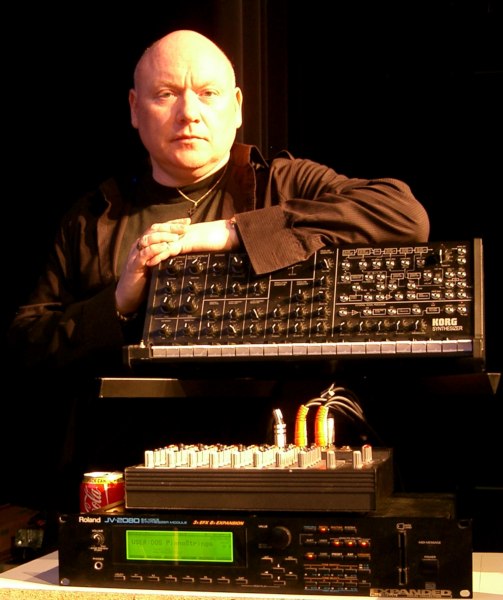 Neil, can you first of all sketch some background on yourself? Well, I’m a classically trained musician on piano and, primarily, organ. I started lessons at the age of five and took my first theory exams when I was about eight or nine. I then progressed through the various grades and stopped having lessons when I was 14 years old – by this time girls and having a good time were much more important to me and I started to find the predominance of classical tuition too stifling. I returned to music when I was 19, arming myself to the teeth with a Yamaha DX21, a Roland JX-3P and Casio CZ-101, my first set-up.I have had a love of music from a very early age, my first pop record was “I’ll Be Your Long-Haired Lover From Liverpool” by Little Jimmy Osmond when I was seven years old. My first lp was “Mr. Spock’s Music From Outer Space” (I love Star Trek and will fight anyone who dares to question that) and my first classical record was “The Planets Suite” by Gustav Holst. I still have all these records today.I first discovered synthesizer/electronic music in 1977 with Donna Summer’s “I Feel Love”, I was completely blown away by Giorgio Moroder’s sound and production and so began my journey into the esoteric world of synthesizers. I was introduced to the music of Tangerine Dream, Vangelis, Jean Michel Jarre and Isao Tomita by a group of kids who used to come into my parent’s pub when I was about 13/14 and my world was rocked in a good way – the plethora of soundscapes, rhythms and melodies took me to the places of my dreams.What came next? In 1978, I discovered a hitherto unknown group by the name of Ultravox, led by an enigmatic character called John Foxx, who had just released their third studio album, “Systems Of Romance” (the best Ultravox album ever in my opinion). This was a musical turning point in my life as it not only introduced me to Ultravox, but also to the work of the German producer Conny Plank. From there, I found Can, Kraftwerk, Neu! and Cluster. My journey also took in David Bowie (going through his Berlin period at this time) which in turn led me to one of my favourite artists, Brian Eno. The year 1979 was another landmark year because this was when I discovered the music, sound and look of Gary Numan – I still recall, as a spotty 13 year old, his first appearance on Top Of The Pops in the Spring of that year. My shaping identity was heavily influenced by this man and his sound, but it was in 1980 that things took a major step forward with the advent of the New Romantics. So what did the ‘80’s and ‘90’s look like for you? The 1990’s saw me move away from music totally. A number of personal difficulties in 1990 meant the music equipment I owned had to be sold and a year later in 1991, I started a career in the casino industry which as you can imagine, took my whole life over. It was during this time that I met my ex-wife Julie. We got together, had a great time with a lot of laughs, eventually marrying and having two fantastic children. Whilst playing music was simply not happening, listening was another matter. What happened after the turn of the Millenium? As with any other person, the loss of my father in 2006 was monumental thing. There were so many things left unsaid and so many dreams not realized. My father was the person who had the most faith in me as a musician. From an early age, right through to the day he died, he would tell me that I should have made music my career. And it was his belief in me, even after his death that spurred me on to fulfill what he believed I was capable of.
In August 2006, the Geigertek-project came into being. Working with a German friend who called himself Conrad Geiger, we worked on a collection of instrumental electronic pieces that when completed, was given the title of “The Garden”. Neil, you already mentioned David Wright. How did you get in touch with him and all the others at AD Music? The first “air-play” of my music was on the excellent RoboCast Radio – a podcast created by a thoroughly nice man called Ian Price. This brought more attention to Geigertek and it was a couple of people who suggested I contact a radio DJ called Terry Hawke. He has a weekly show called “Hawke’s Chill-out Sessions” where he plays music from un-signed/new acts as well as the “old favorites”. I did this and had a great response. In November 2007, Terry invited me to send in more material as well as a telephone interview. It was immediately after this interview that I was contacted by both Terry and a gentleman in the U.S.A. called Steve Ruby, both of whom suggested that I send “The Garden” to AD Music. I did as they suggested and was quite surprised to learn that not only was AD Music based in a small town only 20 minutes drive from me, but it was also run by David Wright. As I said, I sent the cd-r to AD Music and thought nothing more of it until I got an e-mail from David Wright asking me to contact him, which I did immediately and a meeting was set up. I went over to David’s studio for a 7.30pm start, made sure I dressed smartly and not knowing what to expect. We talked about the music, about what AD Music could offer and what to expect should things progress and David made a couple of suggestions that he felt would improve the sound of the album. We then started talking off subject (something that happens all the time now!) and the next thing I know is it’s gone 3am! Over the coming weeks, David re-mastered the album whilst I sat alongside him watching and learning. Those sessions provided a lot of laughs and were the foundations for what is now a great friendship (but don’t tell him I said that!). Neil, please share your views upon the past, current and future EM scene and its music… Even after purchasing my own equipment, I was always in a state of awe seeing the synths and drum machines doing their stuff on stage. And I think that the pioneers of electronic music were on a par with the classical greats such as Mozart, Frederick Delius, Erik Satie and William Walton in that they took sound in new directions, and seemed to be perennially evolving. When speaking of the present, my own view is that maybe things have become a little staid on a number of levels. When buying music, I’m not really feeling that sense of evolution and sometimes wonder if artists are “playing it safe”. On so many levels, an audience expects a lot more than they did 10 years ago. One area is performance – it’s cool to have the big modular synths and racks of gear, but what about the personalities operating them? As a paying customer, I would not want to be looking at someone’s back for two hours and whilst video backdrops are definitely cool, I want to see that the artist is there and enjoying themselves – an artist enjoying their performance or putting a bit of a show on comes across to the people watching and adds to the occasion. Something as mundane as this could potentially reach a wider audience. Also, attitudes to how the music is presented is something that I personally find difficult to understand. I say this because EM is losing audiences and needs to reach new and fresher ears and minds, therefore a reluctance to embrace some new technologies kind of flies in the face of what creating electronic music is about and negates the complaints about lower sales and poorer attendances. So, what’s you opinion on the format of music? Speaking personally, I haven’t bought a cd for the last three years. Why? Because I too embrace the change which allows me instant listening and saves me money. And as for sound quality, I believe that with a decent download such as 256kbps you need to very anal to tell the difference – I have a good quality hi-fi system at home as well as well-tuned ears, and quite frankly whatever microscopic audible (for those would threaten me with oscilloscopes!) difference there is won’t have me crying like a baby. We had it with vinyl – if you want to listen to crackles and hum, go ahead. We have it now with cds – if you want to spend extra on a physical product that takes up room and sometimes has postage costs, go ahead. Download is the way for all music, never mind EM, and if this genre was to embrace it fully, I, for one, believe that it stands a good chance of re-establishing itself as an acceptable part of the musical arts in the future. The future of the EM scene and music has to be about change. There is a need to attract and educate a wider and younger audience who presently think that electronic music is all about Lady Gaga or Little Boots. I recently introduced my twelve year old son to the Yellow Magic Orchestra – he’s hooked and is playing it to his friends, who are also saying it’s cool. Do you keep contacts with other musicians next to the already mentioned David Wright So do you have any interest in collaborating with other musicians (any favorites?) for certain projects? What can you tell of the way you compose your music?
Emotional situations/experiences (the main thing for everybody I think) also feature in my approach. My first two albums were born of emotional response and (particularly the second album) spiritual beliefs. The new material I am working on is more image response than anything else, but it is still early days yet. So how does your studio look like and what the gear do you use? Let’s have a closer look at your two albums you released so far: “The Garden” and “The Timeless Mind”. How different are they from each other in your opinion, musically and in approach? Musically, “The Garden” was inspired by our garden. When I started writing the music, Anne and I had only been in the property a few weeks and it is a small piece of nature in a little corner of a city, with so much going on in it from the birds to the insects to the trees and plants. But also at this time, I also saw the garden as something of a mystical place, somewhere to go to when we first pass the point of physical death, something of a spiritual waiting room if you like and that’s how “The Timeless Mind” became something of a sequel to “The Garden” in it’s concept.
Musically, the album is a mixture of styles, influences and moods. I love ambient soundscapes and a couple of the tracks, particularly “View From A White Room”, embraced that love. This was also a time when I was experimenting a lot with the new software synths that had come into my possession, sand I think that comes through on a track called “The Day It Rained” as I happily and deliberately used a Korg Wavestation (the Legacy Collection was my first premium synth package – wish I could have got the controller as well!) preset for the main rhythm and other Wavestation presets for pads etc. The album “The Garden” was mastered by David Wright in his studio one night a week over an 8-9 week period. I sat in on the session and this is where I began to learn more about what the studio had to offer. So what about “The Timeless Mind” I wanted to do something that was a little more electronic, more up-tempo and closer to the sequenced style of music I was listening to. My approach to “The Timeless Mind” was very different. The initial recordings of “The Garden” were done with a friend who had some idea of what we were supposed to be doing, this time I was totally alone with the initial writing, recording and production. But armed with what I had learned from David Wright, I felt more confident about what I was doing. The album took me approximately a year to record with a further three months of production. I was pleased with the outcome, but still felt that it lacked something, and certainly elements of my production were not perfect. This time around, Dave Massey (Code Indigo and Callisto) stepped in and gave the album the polish it needed. Again, I sat in on the sessions and as with the time spent with David Wright, I found sitting with Dave Massey both educational and fun (mostly at David Wright’s expense!). I also read somewhere your second album “The Timeless Mind” is inspired by what lies beyond this life…. I took these questions and put together a scenario of what might occur after we leave the physical body, and did it from a first-person perspective. The first track, “The Stirring Of Echoes” essentially represents the coming death experience and I think that the second track “Passing” speaks for itself. For that one, I created the dramatic first part which signifies the last moments of life, the gathering of the family to say the goodbyes etc, then the atonal electronic passage represents the journey to the afterlife. The final gentle piano-based section portrays the arrival into a garden where loved-ones await greet the newly passed person – as a nod to the under-lying concept of my first album and as a tip of the hat to my father, I ended this track with a couple of phrases from the track called “The Garden”. The third track looks at the first impressions one might have when first arrived in the afterlife – as you might well have guessed, the film of the same name with Robin Williams was a huge influence here. “Until The End Of Time” is about the acceptance of where you are and that you have to wait for those you loved in the physical world, particularly a wife or children, to join you at a later time. The longest track on the album “The Embrace Of Eternity” explores the concept of what is available to you now that you free of the confines of the physical body. Can you explore the farthest reaches of space? Can you travel back and forth in time? Can you go to the end of eternity? The title track was always going to be deliberately “cheesy”. I wanted a track that was up-lifting because this is the point where you re-connect with your higher-self. A part of my personal beliefs is that only a part of us is in this physical life and that the greater part of ourselves remains in the spiritual realms. It’s only after we die that we re-connect with this part of our consciousness, something that I call the timeless mind, therefore, it has to be a good thing to be complete again, hence the up-tempo, cheesy melody. “Spirit-Walking” is another track that I think speaks for itself. You’re in this place, you’re free to go and to move where you want. That’s a good thing and once you’ve found your “spiritual feet”, you can start moving about and taking in all that eternity has to offer.
Why did you insist on the (in my opinion) quirky ending of “The Timeless Mind”? The last track, “The Gift of Goodbye”, is the most personal track on the album. It has it’s meaning within the overall context of the album but it also has it’s meaning for me personally because this was me saying goodbye to my father. When I first played “The Gift Of Goodbye” to AD Music, they all fell about laughing at the last minute or so, because they weren’t expecting it – it was totally against the rest of the album. But that’s me as a person, I don’t like sticking to conformities and like to challenge conventions. But also, the quirky little ditty – which is the main theme of the track played in a slightly jazz-like way – represents someone moving on in their own way, much as I imagine my father would have done. You had the grand and dramatic first part, church organs, choirs and strings, but then you have the person, a wry smile as he turns and walks away to music and a groove he would have enjoyed in his physical life. In the U.K., we had a comedy duo called Morecambe and Wise who were national treasures and my father’s favorites. The straight man was Ernie Wise and the comic was Eric Morecambe who had a gifted sense of timing. Was there any kind of “risk” involved assembling the tracks and music for the second album? I heard the initial concepts of the Geigertek project did not include performing live concerts at all, but this this changed following the signing of the first Geigertek album to AD Music. How come? On top of that, I didn’t have any equipment, apart from a MIDI keyboard and a computer. However, whilst David Wright was mixing “The Garden” in January of 2008, he was telling me about a concert he was planning for the following September in his hometown of Bungay (which is only 13 miles from where I live) and suggested that perhaps I might like to play as his support act. Now, let’s keep in mind here, I had no equipment, I was 20 years out of live performance and I had an unfinished album of music – saying yes was, in some respects, total madness. However, I had committed to the gig and had to sort everything out – it was a challenge!
So from there, I was bitten once again by the live bug, and over the last couple of years, I’ve been altering my live set-up so that I can avoid the pitfalls of millions of miles of cabling and an excess of equipment. I’ve now reached a point where I’m happy with my live set-up which consists of a pc, a laptop, three MIDI controllers, the Roland JV-2080 and my sparkling personality and good looks. What can you tell about your recruitment in January 2009 as keyboard player to the popular electronic rock group, Code Indigo?
It was quite a moment for me because, along with following David Wright et al, I had also been following and buying the music of Code Indigo for some time. And now here I was, being asked to join. I thought about it for approximately one third of a second and then said yes. My first outing with them was at the AD Music Festival in September of 2009. I have to say that I was a little apprehensive because I had to fill a rather large pair of boots. I was very aware of Robert Fox’s popularity and of course his reputation as a keyboard player, but I went out onto the stage, did what I had to do and thoroughly enjoyed the moment. Rather than emulate Robert’s style, I took my own pathway by allowing my personality as well as my musical style to come across in the performance and the music. I was pleased and quite touched that the attending fans of Code Indigo accepted me – let’s hope that stays in place when we present a new album!!! I get on very well with the other members of the group and during rehearsals we had a lot of laughs – I enjoy the company of Dave Massey and Nigel Turner-Heffer very much and I find that “jamming” with Andy Lobban can be a lot of fun, it’s a shame he isn’t more local to us. There’s a great attitude as well as considerable humor (often directed at David Wright) within the group and this is what I enjoy the most at this stage. 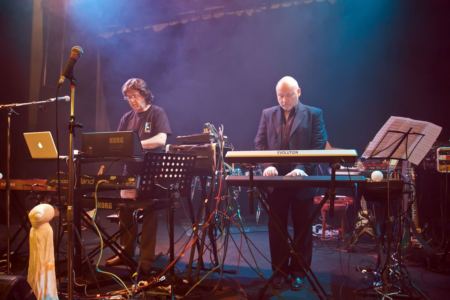 Joining Code Indigo took me to the AD: 2009 Music Festival and as a result of that, allowed me the pleasure of meeting Ian Boddy, a thoroughly entertaining and very talented man, and another example of meeting someone you’ve admired for some time and not being disappointed. A further spin-off from this was also being asked to step in and provide keyboards for Callisto’s live performances because Dave Massey is quite simply not a performing person in the slightest. This was just great for me as I love the music of Callisto, so the chance to perform it was never going to be refused. We did our first performance of the “Nyx” material at the Hampshire Jam in 2009 and it was very well received. It was another cool event at which I was able to meet some of the U.K.’s best EM performers (notably Duncan Goddard of Radio Massacre International, John Christian of Air Sculpture and Phil Booth and Mick Daniel of Pollard/Daniel/Booth) as well as the fans of the genre. I also enjoyed our slot at the 2010 E-Day, which for me was a real step up in terms of technical performance as I was running the majority of the sequences live through two laptops through-out that part of the set. I recently heard your “Endless Night” EP is also due very soon. Could you please say a few things about the release and its music?
I didn’t approach AD Music with the E.P. as it isn’t their sort of thing musically, but when I asked David Wright for advice about doing the publishing myself, he stepped in and offered me the opportunity of releasing “Endless Night” through AD Music. Whilst it’s only a six-track affair, I’m quite proud of it as it shows another side to my music which has lain dormant for many years – I also had a lot of fun doing it!!! It also gave me the chance to put into practice many of the studio things I learnt from David Wright and Dave Massey, which was evident because no further input was needed at the mastering stage, unlike my first two albums. I also look upon “Endless Night” as an opportunity to show that sequenced EM and vocals can sit together, and, based on the experience, it is possible I will do more of this type of thing again because it gave me a new avenue of experience in recording and producing vocals – at times a total nightmare, but I think I managed to pull it off – lol. Finally, anything else you’d like to share/mention One will be original material and has the working title of “Soundtrack For City Living” and the other is an album of classical music, to be called “Interpretations”, where I’m using original orchestral scores and replacing the elements of the orchestra with synthesizers. It won’t be like William Orbit, Tomita or Wendy Carlos as I’m not re-arranging the pieces. Discography: 
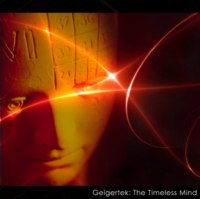
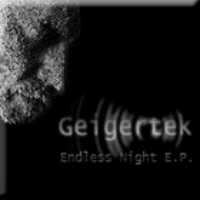
Website: www.neilfellowes.bandcamp.com |
||



